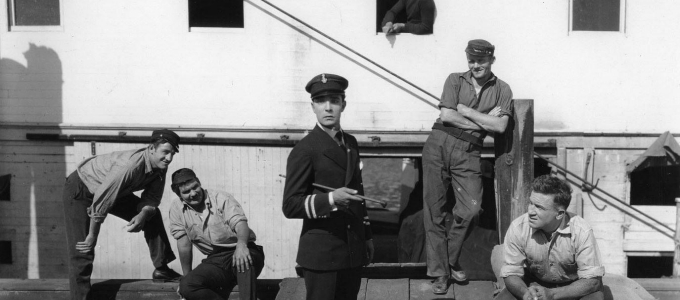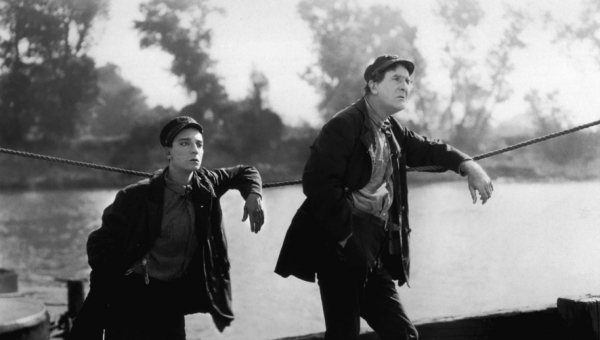 Cinemagoers of a certain age seeing silent movies at the National Film Theatre or the Academy in Oxford Street may remember Florence de Jong, the doyenne of accompanists in the 1970s, doing sterling work at the piano during one of Buster Keaton’s periodic revivals. Now here’s Neil Brand to pick up the baton, beginning by introducing scenes from the great comedian’s work and telling his gratifyingly young audience that as Keaton rarely opened his mouth, let alone cracked a smile, ‘My job is to give Buster a voice’.
Cinemagoers of a certain age seeing silent movies at the National Film Theatre or the Academy in Oxford Street may remember Florence de Jong, the doyenne of accompanists in the 1970s, doing sterling work at the piano during one of Buster Keaton’s periodic revivals. Now here’s Neil Brand to pick up the baton, beginning by introducing scenes from the great comedian’s work and telling his gratifyingly young audience that as Keaton rarely opened his mouth, let alone cracked a smile, ‘My job is to give Buster a voice’.
After triumphing at last year’s Festival with the rarely-seen German classic PEOPLE ON SUNDAY (a collaboration between Billy Wilder, Robert Siodmak and other soon-to-be-celebrated Hollywood émigrés) Brand shows himself to be the best kind of teacher, not only explaining how jokes work but helping to bring them to life on the screen: Keaton surrounded himself with gag-writers expert in building up such visual sequences as the climactic pursuit in SEVEN CHANCES (which started life as a failed stage play, so they had a blank canvas to work with).
The set-up is that Keaton’s character Jimmie Shannon needs to get married that day to inherit a fortune. Word gets out and he is besieged by hundreds of women of all shapes and sizes. As hordes of them descend on the church Jimmie jumps out of the window and hightails it for the hills where, still chased by the women, he sets off a landslide of boulders which pursue him towards the massed and waiting would-be brides…
‘My job is to give Buster a voice’.
This is the canvas that Brand works with and (as with the best film music) he doesn’t get in the way, accelerating and building crescendos as needed: some recent DVD issues of Buster Keaton’s work punctuate the action with ‘specially composed’ musical punchlines, whether of the whistles and whoopee cushion variety or unnecessary percussion when Keaton – who performed not only his own stunts but often those of other cast-members in long-shot – falls over or is hit by a tree or (in SEVEN CHANCES) the smallest pebble which rounds off the landslide sequence.
In his accompaniment to the full-length STEAMBOAT BILL JUNIOR Neil Brand again helps the action flow (while conceding that the long typhoon sequence that climaxes the picture can cause problems of repetition for the pianist). But besides the spectacular and famous set-pieces – such as the entire building that falls on Keaton, leaving him standing in the open window – here too are emotional moods to be brought out, in the scenes between a son and his disappointed father, and the wrong-side-of-the-river romance between Keaton and his college sweetheart. Again Brand doesn’t disappoint, giving the spanking new print both a voice and the lie to the New York Times’s 1928 review: ‘A gloomy comedy’.
httpvh://youtu.be/f0tzar8ZLGY

